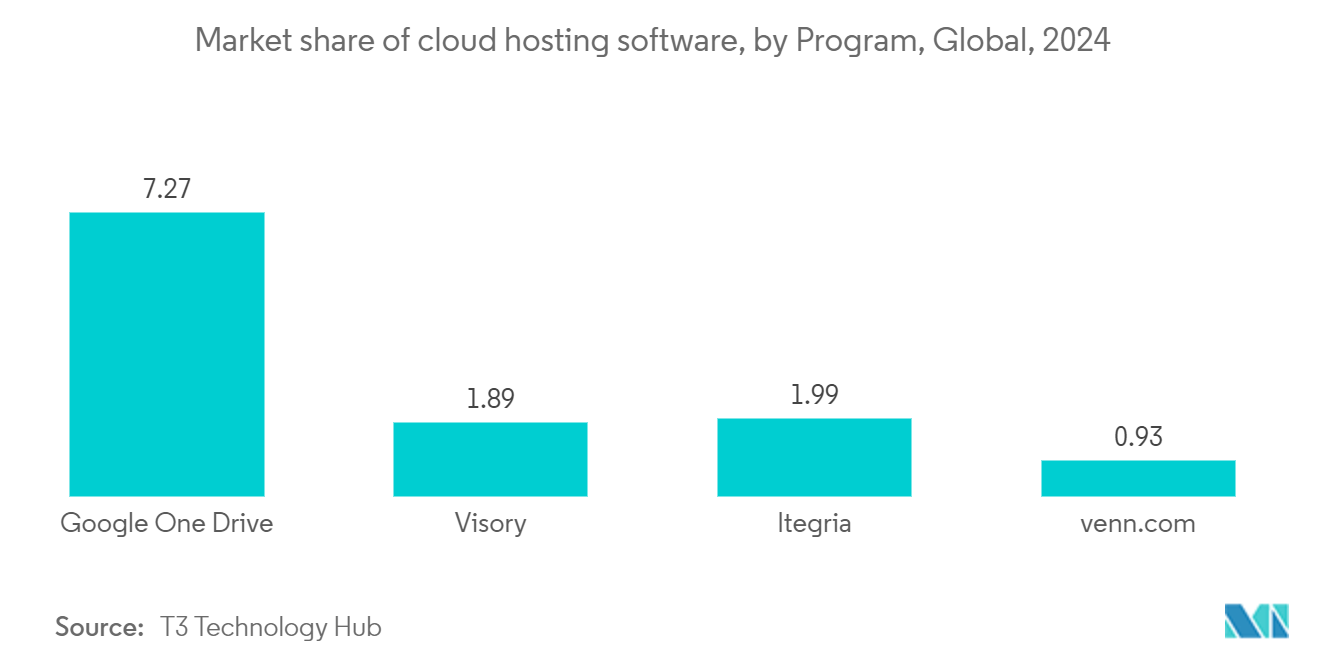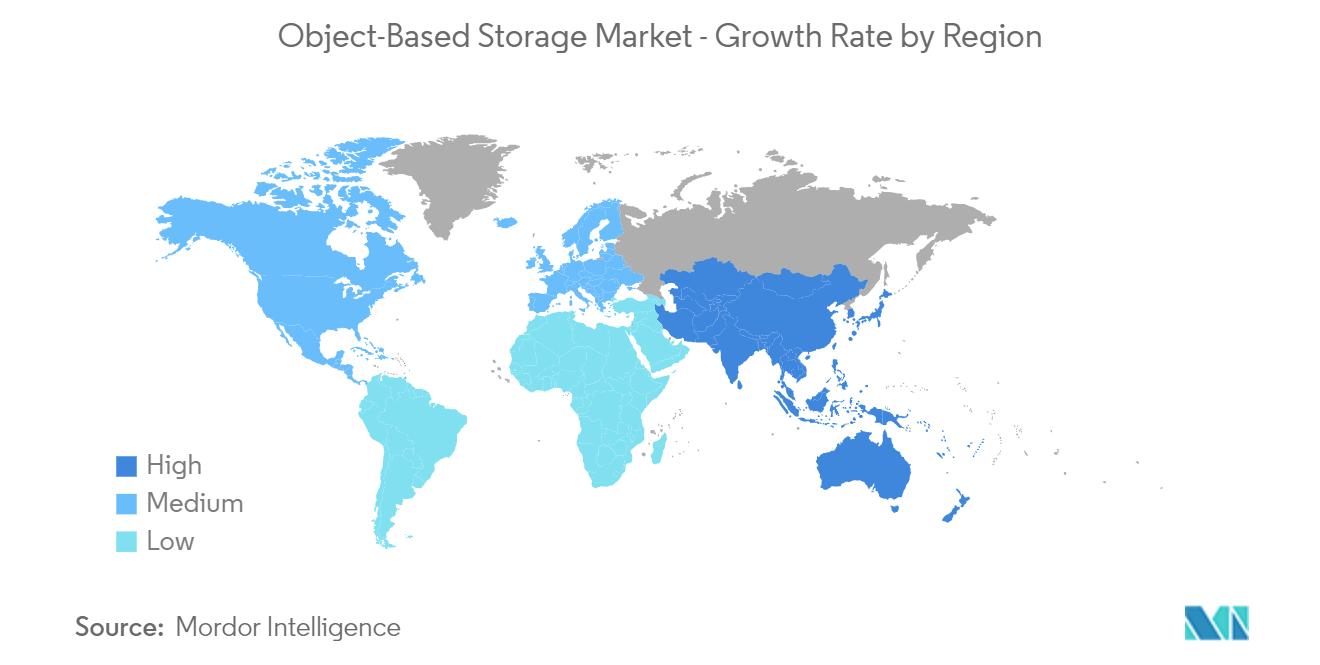Market Trends of Object-Based Storage Industry
Cloud based Deployment to Dominate the Market Share
- The steep growth of unstructured data for emerging and established workloads requires products driven by infrastructure software-defined storage that can deliver tens of petabytes of storage and potentially leverage hybrid cloud workflow with public cloud IaaS. New and established storage companies are developing scalable object storage products to address cost, agility, and scalability limitations in traditional scale-up storage environments.
- The current unstructured storage market is evolving to embrace hybrid cloud workflows and capabilities as IT leaders are looking to take advantage of public cloud agility, efficiency, and cloud computing capabilities. The object storage segment is considered a two-sided market. There are multiple providers of object storage protocols and consumers of these protocols consisting of applications.
- There were several providers than consumers until the Amazon S3 API became the de facto standard for object storage. Also, companies utilizing object storage platforms in enterprise data centers adopted Amazon S3, a protocol prominently used in the public cloud, because of the developer community around it.
- Several providers and consumers are using Amazon S3. Utilizing public cloud services like AWS has brought significant customer awareness to the object storage market. Software developers building Mode 2 web and mobile applications sometimes must repatriate these applications back to enterprise data centers. Enterprise IT seeks control of data and applications, while software developers seek efficient ways of programmatically interacting with infrastructure.
- Object storage excels at data sharing and consistency compared to other storage options. One instance of an application may wind up seeing partial data produced by another example in block-based and file-based data storage. Application developers ultimately require persistent locks to work around this problem. However, such plans have their own unique set of problems, including performance and accuracy issues.

North America to account for significant market growth.
- North America is expected to expand the global market through the projected period. The region's cloud object storage market is anticipated to grow throughout the review period due to the regional main players' consolidation. Additionally, the region's use of cloud storage services by large and small & medium organizations has increased due to the region's large-scale influx and outflow of enormous data.
- One of the factors driving the market's expansion is the growth of internet traffic and user-generated content, and the North American area sees the most I.P. traffic internationally. Cisco projects that the region's I.P. traffic will grow by 21% annually to 108.4 EB by last year.
- Additionally, the area is home to several well-known vendors in object storage, including IBM and Dell. This element aids in the greater use of Object-based storage in the area. Compared to unified file/block, SAN, and NAS, object storage will be purchased by more U.S. businesses. A quarter is expanding on-premises storage, while nearly half are boosting cloud storage.
- The BFSI industry is forced to adapt and innovate its services due to the change in business strategy. Worldwide, banking service providers are implementing cloud storage solutions. More than 90% of financial institutions, according to the American Bankers Association, use cloud technology for some or all of their banking operations.


